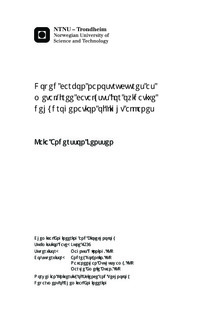Doped carbon nanostructures as metal-free catalysts for oxidative dehydrogenation of light alkanes
Abstract
Catalytic reactions are often carried out on various supported metals, these usually being noble metals or metal oxides. Even though metal based catalysts plays a major role in today s industrial processes, they still have several disadvantages, including high cost, proneness to gas poisoning, as well as disadvantageous effect on the environment. Recently, certain carbon nanomaterials have been in the spotlight of several research groups, as carbon has the advantages of wide availability, environmental acceptability, corrosion resistance, in addition to its unique surface properties. The goal is to use the carbon nanomaterials to produce better catalysts - without the use of noble metals.By doping carbon nanofibers and carbon nanotubes with other elements, one can significantly alter their physical and chemical properties, thus making them more reactive. Boron, nitrogen and phosphorus are some of the chemical elements that can be used as doping agents.In this study nitrogen doped carbon nanofibers was investigated, by using them in the oxidative dehydrogenation (ODH) of propane. The carbon nanofibers was synthesized by chemical vapor deposition (CVD), where ammonia and various carbon (CO, C2H6, C2H4) sources was decomposed over on Fe or Ni, supported on expandable graphite. After the synthesis, the nitrogen doped carbon fibers was treated with nitric acid to remove the metal from the growth catalyst, before the sample was annealed. Three iron based samples was compared during this project; the as synthesized CNFs, the CNFs after acid treatment, and the CNFs after annealing. In addition a sample of as synthesized nickel based catalyst was investigated.In addition to the activity testing, BET, XRD, TEM and XPS were carried out on the catalysts, which confirmed that the synthesis of the nitrogen doped carbon nanofibers was successful.The results from the ODH suggests that the nickel based catalyst have better activity than the iron based samples, in addition to producing less CO2. However, the selectivity towards propene was better for the iron based samples. This could be due to the differences in structure for the iron based and the nickel based catalyst, causing a difference in the distribution of nitrogen and oxygen groups on the surface.
